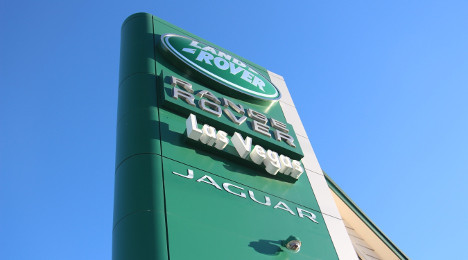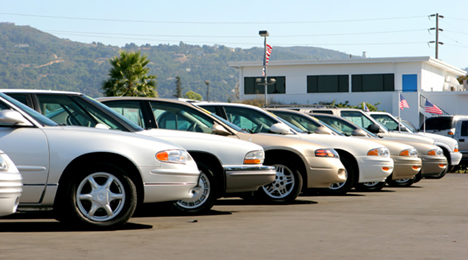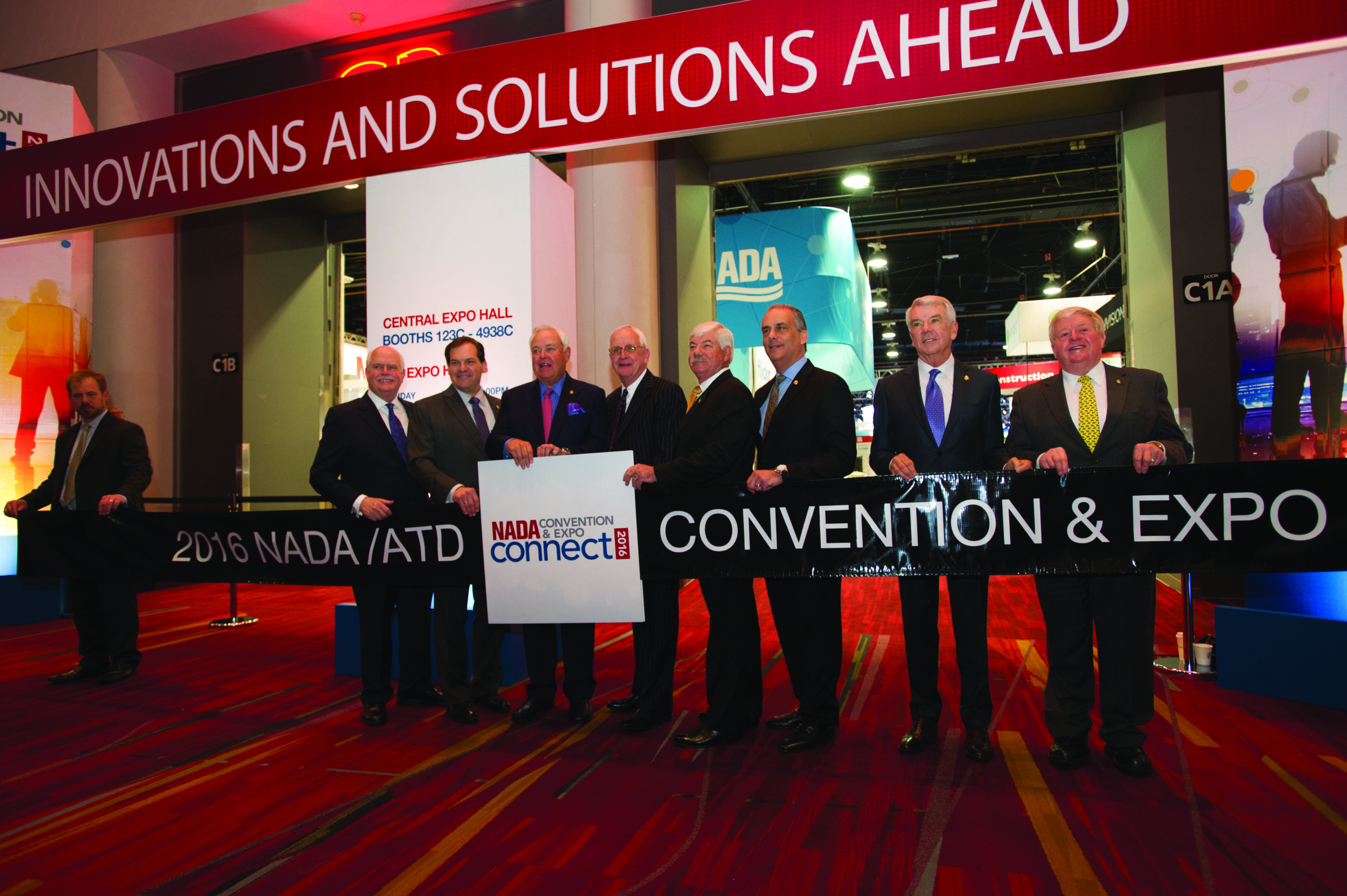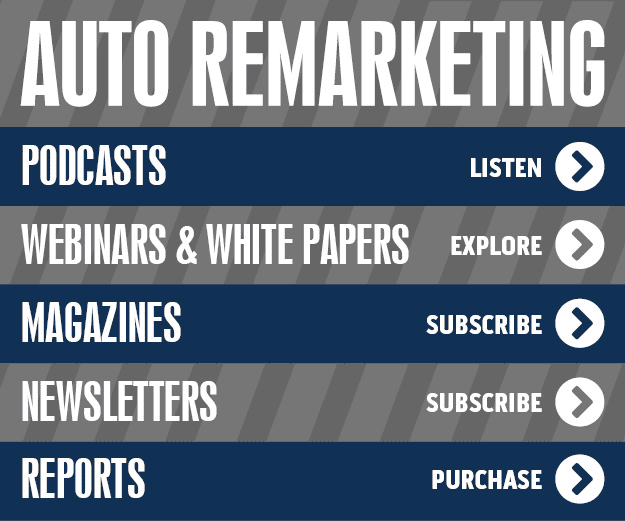You have painstakingly constructed a talented sales team that truly understands how to demonstrate the value and benefits of your product — they really know how to sell cars. You have invested in your team's technology, training and continuing development to make certain you are positioned and poised for success in diverse economic climates.
With all this hard work, your customer service index scores (CSI) and per vehicle retail (PVR) numbers are still not exactly where you want them to be. You have thought a lot about what you and your team can do to move the needle. You have felt that something might be “wrong” on the sales floor, but you just can’t quite put your finger on it. You recently lost an exceptional salesperson (or perhaps even a manager) to a voluntary termination that really surprised and disappointed you.
You find yourself asking: What is going on in my dealership?
Whether this scenario describes your dealership dynamic or not, hidden conflict has probably had an impact on your sales department, your bottom-line profits, and it may be the root of some of your recent challenges. If you have been lucky thus far and avoided the costs of conflict, be aware that it most likely will impact your business in the very near future.
The fascinating reality about conflict is that it influences so many things outside of the simple visible disagreements or the discord and disharmony that you can feel between individual participants in a conflict. In fact, conflict can infect your team’s culture and can rob you of customer loyalty, your dealership’s reputation, and if hidden and allowed to exist over a long period of time, conflict can cost you a tremendous amount of money.
How much money you ask? Various factors have to be considered when calculating the real (and sometimes hidden) costs of workplace conflicts. In addition to the cost of wasted time and opportunity. It’s evident that employees who are impacted by conflict have lower job performance, customer service, motivation, and overall productivity. Conflict can also lead to absenteeism, vandalism, degraded decisional aptitude, and the loss of expensive (and thoughtful) investment in a skilled employee who comes to suffer from the dreaded “I don’t care anymore” attitude.
Often, hidden conflicts can lead to false whistleblowing allegations and lawsuits against your organization. It can also be the gateway to surprise bursts of attrition where previously well-trained and professionally developed employees choose to leave the organization for other opportunities. Your dealership becomes an amazing training ground for the success of others.
The direct costs of conflict are, luckily for us, observable, measurable and accrue over time, making them easy to calculate utilizing a proven tool called the Dana Cost Calculator highlighted in a 2003 issue of HR Magazine. Let’s examine one example of the true cost of losing just one mid-level sales person in your dealership due to a covert (or overt) conflict within your organization.
1. Employee’s annual salary and commission: $80,000
2. Multiply by 1.4 (140 percent) as the investment you have in the employee: $112,000
3. Multiply by 1.5 (150 percent) as the cost of replacing the employee: $168,000
4. Multiply by .6 (60 percent) average role of conflict in voluntary terminations: $100,800.
Now, multiply times the number of voluntary terminations in your organization annually.
If you have a 10 percent turnover rate in a company of 100 employees that’s 10 employees. Calculate 10 times $100,800 equals $1,008,000. Over $1 million of expense was wasted due to conflicts, which usually remains hidden, or ignored, until it is too late to do anything.
What to do when you find a problem
Now that we have determined that conflict can impact your customer service, culture and bottom-line in a very real and tangible way, what can you do about it?
Here is a brief blueprint to help you move forward through overt conflict, identify hidden conflicts and begin to adopt a plan that makes constructive conflicts a part of your successful and profitable dealership strategy.
1. Create a culture of accepting the reality of conflict.
It all starts with the creation of a culture where it is common knowledge that conflict exists and that any attempt to utilize conflicts constructively should be rewarded. This is where true leaders stop assigning blame, and instead strive to understand the causes of conflict, and buttress the replication of any successful strides made in constructive conflict resolution by their teams.
2. Take the lead and call out for conflict.
As your dealership’s leader, you won’t hear about any kind of conflict unless you demand to. Many owners and general managers have a hard time seeing the need for differing opinions (which can actually propel the dealership forward if fostered and supported) and instead, they encourage group-think.
This strategy creates a team of people eagerly waiting to know what their boss thinks, just so they can provide ideas and comments that fall in-line with this position.
3. Introduce constructive conflict training.
You have invested a tremendous amount of money in training your salespeople how to sell cars and your sales manager leadership on how to structure deals, assess car values, coach, counsel and train their teams. Why not add constructive conflict resolution techniques to your training and development repertoire?
If Google, Apple, and Microsoft have made communication and conflict resolution skills part of their core development and training strategies, it may be worth a second look and the small investment required, compared to replacing just one voluntary termination.
4. Adopt the Carnegie Hall approach.
Arthur Rubinstein was approached in the street near Carnegie Hall in New York by a man who asked, “Pardon me, how do I get to Carnegie Hall?” Rubinstein replied, “Practice, practice, practice!”
Most of your employees are innately uncomfortable with conflict and their overall confidence in being able to handle conflict appropriately is likely very low. The only way to earn their stripes and become skilled in constructive conflict techniques is to gain experience through the actual hard work of experiencing how to deal with conflict through practice.
So, I have gotten your attention and you are thinking to yourself, “OK, I’m sold.” If you are ready to commit and adopt a strategy to uncover and constructively solve conflict in your dealership, what should you really expect?
• Increased employee satisfaction
• Lowered employee acquisition costs
• Increased employee productivity and performance
• Increased employee retention
• Streamlined processes and increased company cohesiveness
• Increased customer service and customer satisfaction
• All of this with the added knowledge that satisfied employees save you money
Let’s get started
To get you started and show you just how easy your dealership’s first steps toward a new way to consider conflict (and its impact) is outlined below with a simple process and procedure that has been shared with sales teams throughout the nation.
Introduce these techniques in your next sales meeting or reach out to a local organizational development or conflict resolution expert to visit your dealership and share some similar methods.
Step No. 1: Cool off.
Conflicts cannot be solved in the face of hot emotions and exasperation. Take a step back, breathe deeply and gain some emotional distance before trying to talk things out. Take the time to regain the focus required to create an opportunity to choose a response rather than to simply react.
If you try to skip this step, your words may be too emotionally loaded and may escalate the conflict. Take a break, take a walk around the lot, or breathe deeply and calm down before you say a word.
Step No. 2: Share what is bothering you using “I messages.”
“I messages” are a tool for expressing how we feel without attacking or blaming the other party. By starting from “I,” we take responsibility for the way we perceive the problem and the conflict. This is in sharp contrast to “you messages,” which immediately put others on the defensive and close the doors to communication.
When making “I” statements, it is important to avoid put-downs, guilt trips, sarcasm and negative body language. Your “I message” needs to come from a place inside that is non-combative and shows a willingness to compromise.
In conflict resolution, it is “us against the problem,” not “us against each other.”
Step No. 3: Each person restates what they heard the other person say.
Reflective listening demonstrates that we care enough to hear the other person out, rather than merely focusing on our own point of view. It fosters empathy and understanding. Remember, “No one cares how much you know until they know how much you care.”
Let the other party know that you have heard them. Some examples of ways to start a reflective listening conversation are below.
“This is what I think I hear you saying…”
“I’m picking up that…”
“As I hear it, you…”
“I’m not sure I am with you….Do you mean….?”
Step No. 4: Take responsibility.
In the majority of conflicts, both parties have some degree of responsibility. However, most of us tend to blame others instead of examining our own role in the problem.
When we take responsibility for our own culpability within a conflict, we shift the resolution process into an entirely different gear; one where a win-win resolution is possible.
Step No. 5: Brainstorm solutions together and come up with one that satisfies both people. Resolving conflict is a creative act that can be stimulating and satisfying for both parties.
There are many solutions to a single problem; just make sure you enter this step with the willingness to seek out compromises.
Step 6: Affirm, forgive or thank.
A handshake, hug or kind word gives closure to the resolution of a conflict. Forgiveness is the highest form of closure available to us in conflict resolution.
The affirmation of reaching out to the other party or extending the hand of understanding and friendship creates a mood where animosity and bitterness disappear and the rehabilitators can move forward and focus on animal care.
Final thoughts
Congratulations! You have seen for yourself the expensive impact of hidden conflict in you dealership and how, if left unchecked, it will affect your customer service, culture and bottom line in a very real and measurable way.
A brief blueprint to help you move forward through overt conflict and tips to identify hidden ones was provided here, but this is just the beginning of your journey. To make the most of this new way of considering conflict will require you to adopt a plan that makes constructive conflict management a part of a successful and profitable long-term dealership strategy.
It sounds like a massive challenge, but you will find that if you take the lead, create a culture that accepts the reality of conflict, add comprehensive constructive conflict techniques to your training regimen and award attempts and the practice of resolving conflicts constructively, you will soon see higher profits, better CSI scores, and more productive, satisfied and engaged employees.
George Ewing is the vice president of sales strategy and development at Flagship Credit Acceptance, a national independent auto finance company headquartered in Chadds Ford, Pa. George has spent the last 15 years building a career in the retail automotive industry in roles that include finance, dealership management, underwriting, training and development and marketing. He is a graduate of the Department of Conflict Analysis and Resolution at Nova Southeastern University in Fort Lauderdale, Fla. George is an accomplished trainer, speaker, motivator, and university lecturer. He enjoys living on a working horse farm in Highland Township, Pa., with his best friend and wife Tara and their two children.
Findlay Automotive Group recently purchased a Jaguar franchise to add to its Land Rover Las Vegas store. The franchise was previously owned by Gaudin Automotive Group, which managed it for nearly 30 years.
The transaction was completed July 1. Financial details were not disclosed.
As the only exclusive Jaguar Land Rover Centre in Southern Nevada, Jaguar Land Rover Las Vegas has become a leading retailer in the western United States.
“This is an extraordinary milestone for the luxury automotive sector in Las Vegas,” Ray DiNardi, general manager of Jaguar Land Rover Las Vegas, said in a news release.
“The addition of the Jaguar brand to our existing Land Rover franchise will allow Jaguar Land Rover Las Vegas to offer the Las Vegas and surrounding communities with our elite fleet of vehicles while delivering the superior customer experience our patrons have come to expect.”
The recent launch of the Jaguar F-PACE helped propel Jaguar Land Rover to its best-ever May, with retail sales jumping 18 percent. This was the company’s fifth consecutive record-breaking month. On the certified pre-owned side, the Land Rover brand sold 1,675 units in June (up 25.7 percent year-over-year), according to Autodata Corp., its best-ever CPO month.
“We couldn’t have acquired this brand at a better time,” continued DiNardi. “The new generation of Jaguar has completely revolutionized the Jaguar lineup. With the additions of the all-new Jaguar XE and Jaguar F-PACE, we are poised for instant growth at Jaguar Land Rover Las Vegas and are confident the brand will continue its radical progression.”
While sales are expected to grow, management has emphasized its continued commitment to philanthropic and civic efforts that support the Las Vegas community.
“We are an active organization in the community, sponsoring the Boy Scouts, The American Diabetes Association and various other charitable organizations,” DiNardi said. “Jaguar Land Rover Las Vegas is also proud to support The Conservation Fund. Our efforts have resulted in planting over 5,000 trees that have offset over 6,400 tons of CO2 to date, and we take great pride in continuing our support for these causes.”
Jaguar Land Rover Las Vegas is located at 5255 W. Sahara Ave. Store information may be found at jaguarlv.com and lrlv.com.
TradeRev, a mobile app and provider of a vehicle appraisal and auctioning system for dealers, announced on Monday the company has launched its operations in the Northeast region of the United States with employees on the ground in Boston as well as Connecticut, Rhode Island, New Hampshire and Maine.
In making the announcement, TradeRev executive vice president Keith Crerar said, “Since we launched our aggressive expansion into the United States, getting boots-on-the-ground in this key automotive region has been a major focus.
“Launching in the Northeast gives us the opportunity to reach a new market of dealers and introduce them to our ground-breaking solution that will ultimately change the way they do business,” Crerar added.
TradeRev is planning to fill 10 market sales manager positions in the Northeast region. Hiring is currently in play and will continue until all positions are filled.
TradeRev is designed to harness the power of digital technology to enable dealers to launch live, real-time, one-hour auctions, while empowering buyers to purchase vehicles from wherever they are, from the palm of their hand, and featuring a daily sale at 3 p.m.
The company believes this technology has revolutionized the remarketing process, making it more productive and profitable for dealers, allowing them to close more new deals, minimize risks during the trade-in process and sell vehicles quickly, all at a reduced expense.
To learn more about TradeRev, go to traderev.com.
Instagram recently launched a completely new feature set called Instagram Stories.
The company describes it as “a new feature that lets you share all the moments of your day, not just the ones you want to keep on your profile. As you share multiple photos and videos, they appear together in a slideshow format: your story.”
Prior to the update, Instagram was a social network for sharing one 60-second video or one image with your choice of a personalized caption and hashtags i.e. (#ilovemynewcar). Now, you can record video and add it to your story, and it stays there for 24 hours before it expires. The features that Instagram Stories introduced are similar to another popular social network, Snapchat.
Once you create a story, there is a message button that allows your customers to communicate with you. Think of it as a way to have a conversation that leads to conversions and sales.
Make sure you ask questions to elicit responses.
You can learn more about Instagram Stories here.
So how can Instagram Stories benefit your dealership?
Instagram Stories will help your dealership engage with your prospects on the social networks they hang out on every day. Here are five ways you can use Instagram Stories in your overall social media strategy.
1. Happy customers
Are you capitalizing on your happy customers? A good strategy is to take their picture next to their recent purchase and post it on your dealership's Facebook page. “Here’s John, another happy customer.”
A better strategy is to encourage your happy customer to upload a 60-second video using Instagram Stories, which shares their excitement with their friends for the next 24 hours.
That could lead to potential new customers for your dealership. The videos can also be saved and subsequently uploaded to your dealership's Instagram account and Facebook page. Keep in mind you may need to offer an incentive to motivate your customers to take this sort of action. The opportunities are endless!
2. 24-hour flash sales
Is your dealership running a promotion? Make your followers on Instagram feel special by offering an exclusive sale for the next 24 hours just for followers on Instagram. You can film a quick video using Instagram Stories to get the message out. To measure your response rate, make sure to remind them to mention the special they saw on Instagram.
3. Contests
People love to win things, and social media is a fantastic way to facilitate a contest. Encourage your fans to post a picture of their purchase to either Facebook or Instagram and to tag your dealership. For example, you could offer a free oil change or an accessory, but keep in mind, their profile needs to be public in order for you to see their post.
Once the winner comes in to claim their prize, you can post their excitement to your Instagram Story. If you can find a way to engage your customers online, they’re more likely to engage with you offline as well (at your dealership). Again, this is a great opportunity to save these videos and upload them to your Instagram account and business Facebook page.
4. Staff features
People like to do business with people. Showcase your staff by featuring them on your Story. Ask them questions about what they like to do in their free time or what future features or models they’re looking forward to. These are just a few ideas and opportunities to keep you engaged with your audience. The more you can humanize your dealership using social media, the more relatable you become, which will aid in the sales process.
5. Maintenance tips
If you can teach your audience something, they’ll keep coming back for more. Just make sure you keep it consistent and educational. Providing value is a great way to keep your customers and prospects engaged on social media. Solely being sales focused is how you will alienate your audience.
Overall social media strategy
If you think social media is a vehicle for driving sales, you are half right. Social media is also a way to engage your customers in places they are spending their time (i.e. Facebook and Instagram). With roughly 430 million active monthly users (AMU) according to socialnomics.com, they may not be in the market for something now, but if you stay top of mind with your social media efforts, you’ll earn yourself customers in the future.
If you would like to learn more about Instagram Stories, try it out on your personal account before you use it for your dealership. We recommend that you experiment with the application first to avoid mistakes.
Adam Goldberg is the marketing manager at LotVantage, a provider of digital marketing solutions for automotive, marine, powersports, RV, trailer and outdoor power equipment dealerships. He can be reached at [email protected]. You can also access more social media tips at LotVantage.com/blog.
With new-vehicle transaction prices climbing, automakers are ramping up incentives. In return, models are rolling over the curb at a pace that multiple analysts who sent their assessments to Auto Remarketing believe to be plateauing.
One of the most relevant observations for used-car managers is what Edmunds.com noticed about new-vehicle leasing activity in July since those vehicles likely will be prime certified pre-owned inventory options in about 24 to 36 months.
After touching on 0 percent financing availability, Edmunds.com executive director of industry analysis Jessica Caldwell said, “We’re also seeing indicators that lease deals were much harder for car shoppers to come by in July as lease penetration dropped to 27.8 percent, the lowest level since May of 2015.
“While some of the softness in leasing can be attributed to seasonal fluctuations and the fact that (General Motors’) lease penetration dropped below 20 percent, lease customers are very price sensitive and may need a bit more of a nudge than they’re currently getting to convince them to close the deal,” Caldwell continued.
Leasing certainly is an option for consumers looking to maintain affordability as new-vehicle transaction prices keep moving higher — a development noticed by both Kelley Blue Book and TrueCar.com.
TrueCar estimated the average transaction price (ATP) for a new light vehicle was $32,518 in July, up 1.3 percent from a year ago. Average incentive spending per unit rose by $159 to $3,225. The ratio of incentive spending to ATP was 9.9 percent, up from 9.6 percent a year ago.
“What is interesting to note is that while overall national retail spending remains strong and consumer confidence is relatively unchanged, we are probably seeing some attempts in incentive spending to boost auto sales beyond its organic demand,” said Oliver Strauss, TrueCar’s chief economist.
The analysts over at Kelley Blue Book estimated average transaction price (ATP) for light vehicles came in even higher in July. They pegged ATP at $34,264 as prices for new vehicles increased by $832 year-over-year and $82 compared to the previous month.
“Low interest rates, longer loan terms and increased leasing are helping consumers afford their monthly payments, which would be upwards of $550 per month on a traditional 60-month term,” Kelley Blue Book analyst Tim Fleming said.
If buyers are entering into a retail contract instead of a lease, it appears they’re not getting 0 percent APR at the clip that OEMs sometimes will go to turn new metal, especially in the summertime.
Caldwell said, “0 percent financing deals were much more common last summer than they are now: 12.9 percent of new car loans in July of 2015 were 0 percent, while only 10.2 percent of loans were 0 percent this July.”
The July slowdown evidently isn’t an anomaly, either.
The July Kerrigan Auto Retail Index — composed of the seven publicly traded dealer groups with operations focused on the U.S. market — rose 18.28 percent in July, significantly outperforming the S&P, which analysts said rose 3.56 percent for the month. However, Kerrigan Advisors explained that industry news was “very mixed” for the month so much of this recent rise was “likely a recovery from being over-sold in the prior month.”
In fact, the KAR Index fell 11 percent in June, and year-to-date it’s now off by 10.34 percent.
In its index report, Kerrigan Advisors also mentioned that to this point Ford became the first major automaker to state that the U.S. auto market’s growth was ending. Kerrigan Advisors added the equity research team at Barclays changed its outlook for the U.S. auto market from “plateau” to “eroding plateau.”
Brian Johnson of Barclays said, “Ford acknowledged for the first time any of the pressures we have been talking about for the past few weeks. There’s a big difference between analysts and writers saying this market is poised to get softer, and hearing it from one of the largest players in that market.”
For dealerships looking for an element to signal a turnaround, Stifel chief economist Lindsey Piegza didn’t exactly offer one. Piegza discussed the latest trends regarding how buyers are going to pay for the vehicles they might secure.
Piegza recapped that personal income rose 0.2 percent in June, slightly less than expected, according to Bloomberg. She continued that compensation rose 0.3 percent in June, thanks to a 0.3 percent rise in the wage and salary component.
Piegza also pointed out disposable income increased 0.2 percent in June. Year-over-year, personal income increased 2.7 percent at the end of the second quarter, down from a 2.9-percent annual pace reported the month prior and even further below a near 4 percent growth rate at the start of the year.
“Bottom line,” Piegza began, “as the latest Q2 GDP report showed, the U.S. consumer was doing the heavy lifting April to June, keeping the domestic economy afloat. In other words, the U.S. consumer appears to be on very solid footing, at least for now.
“The continued deceleration of income growth, however, coupled with an ongoing lack of business investment suggests the consumer may face additional hardship in the second half of the year, potentially restraining spending activity below these more recent rates of consumption,” she continued. “After all, without the business investment and development needed to spur robust job and income growth, the consumer will be hard-pressed to maintain a near 4 percent spending pace heading into the second half of the year.”
So perhaps if potential buyers don’t have as much in their wallets when they’re at the showroom, perhaps a point made by KBB’s Fleming could be a silver lining for the used department.
“As the price gap to late-model used cars increases, more shoppers may turn to the pre-owned market for their next vehicle, which could mark a big departure from the new-car sales growth the industry has seen during the past five years,” he said.
Perhaps it takes a shopper longer to decide which vehicle they want from your inventory than it did for the acquisition of DealerRater by Cars.com to close.
Cars.com announced on Monday that it closed the acquisition of DealerRater, a transaction first announced a week ago.
The companies reiterated that terms of the transaction were not disclosed.
“We are pleased to bring DealerRater into the Cars.com family of industry-leading products and people as we create the largest dealer review platform in the automotive sector,” said Cars.com chief executive officer and president Alex Vetter, who spent time with Auto Remarketing explaining why this deal can impact dealerships.
“With this acquisition, Cars.com has solidified its position as the leader in online automotive reviews and the preeminent authority for car shoppers and owners on what to buy, where to buy and who to buy from,” Vetter continued.
Since Cars.com launched its reviews in 2011, the company has maintained its transparent model for generating consumer feedback, which better serves shoppers and customers. The addition of DealerRater and its review database further strengthens this value proposition.
“We are happy to be joining Cars.com and are proud to share a similar foundation,” DealerRater chief executive officer Gary Tucker said. “DealerRater is uniquely positioned to lead the industry transition to finding not only the right dealer, but connecting consumers with the right person at the right dealer.”
While it’s not exactly the case where crickets are chirping in the lanes, Black Book representatives from several parts of the country noticed soft activity at the auction.
Along with recapping the year-over-year differences in full-size pickup prices, this week’s Black Book Market Insights report revealed what dealers are experiencing when making their trips to secure inventory.
In Texas, Black Book’s representative said, “The market has been dropping the last several weeks and continues to do so in this area.”
Two different accounts from Tennessee relayed similar sentiments as one Black Book lane watcher pointed out, “Full-size pickups are in demand but overall, sales are slow,” while the other added, “Buyers say retail is slow in this particular area.”
Down in Florida, the story was, “The market trend in this area is steady to slow,” according to Black Book personnel.
And to the North, it wasn’t much better as Black Book’s representative in Pennsylvania shared, “This week was the poorest buyer response I have seen for this time of year with perfect weather.” In Illinois, the situation was slightly more positive, but Black Book reported back saying, “Prices remain stable at this location even with low attendance.”
Out West, the hammer wasn’t coming down as often in Washington: “It was a below average sale this week with prices down on most models.”
Getting into more detail about prices, Black Book editors decided to shine a spotlight on the full-size pickup segment, which has shown just a slight depreciation curve over the last 16 weeks. Editors explained that what’s interesting here is that a year ago during the same time, this segment showed stronger retention with an increase in value in the same time period.
“Luxury car values decreased at a steeper rate than mainstream brand cars, while pickup trucks continue to show retention strength. Several locations reported slower sales and low attendance at auctions,” said Black Book senior vice president of automotive valuation and analytics Anil Goyal, who will be making multiple appearances during Used Car Week at the Red Rock Resort and Casino in Las Vegas from Nov. 14 to 18.
Volume-weighted, Black Book indicated overall car values decreased by 0.53 percent last week. This reading is higher than the average depreciation rate of 0.43 percent seen in the previous four weeks.
As Goyal previously mentioned, luxury cars led the decline by 0.85 percent, followed by the near-luxury car and sub-compact car segments dropping by 0.79 percent and 0.77 percent, respectively.
Volume-weighted, Black Book determined overall truck values decreased by 0.37 percent last week. This movement is similar to the average depreciation rate of 0.35 percent seen in the previous four weeks.
Pickups and full-size crossovers/SUVs retained good values, according to editors.
AutoAlert announced it is now a certified partner in the Audi of America Tier III Co-Op Program.
The program allows Audi dealerships to be reimbursed for certain OEM-approved expenses, provided they follow certain guidelines and have funding available. This process can give their teams more spending power elsewhere, according to news release.
AutoAlert equity- and data-mining customers can benefit from valuable consumer insights such as knowing the makes and models searched, previous dealership interactions, existing social connections with dealerships and insights on previous purchases.
“This is an exciting time for AutoAlert’s software and our dealerships, as we are able to offer equity- and data-mining insights, sophisticated communications, and alerts right to our dealerships’ desktop,” Kendall Billman, AutoAlert senior vice president, said in the release.
“Now, with our certified partnership with Audi of America Tier III Co-Op Program, we offer our dealers the opportunity to extend their budgets while increasing sales opportunities and client retention," Billman added.
Cars.com chief executive officer and president Alex Vetter explained why the company’s decision to acquire DealerRater goes way beyond just another sales tool within its service portfolio it can provide to dealerships.
In a way, Vetter described the pending transaction first announced on Tuesday morning basically as a move to protect dealerships from losing their sales business to upstarts that are aiming to carve away vehicle turns through a wide array of new technological approaches.
“I think it’s an important time in the auto industry because there are so many new peer-play digital companies coming into our industry, pushing the new experience or the new way to buy,” Vetter told Auto Remarketing in an exclusive phone conversation.
“We believe inherently that local dealers are still people’s best bet,” he continued. “Some lack the tools and technology to amplify what great experiences they’re providing in each of their local markets. We’re excited to help dealers harness the power of word-of-mouth marketing to amplify their customer sentiment, which we know is extremely positive.
“The media tends to focus on the one or two bad examples that are bound to happen in a big category with a big-ticket item,” Vetter went on to say. “We like to help dealers develop their own media channel to help get the word out about the great customers they’re solving problems for each and every day. There’s a lot of great opportunities here for our clients.”
Part of that opportunity resides with the potential of combining what DealerRater offers — a compilation of consumer opinions about a store’s sales and service department — with what Cars.com provides — vehicle inventory listings as well as research and other information to help individuals select a model that fits best.
“As you’ve seen over the last five, six years, consumer reviews have become a really important ingredient for all forms of e-commerce, not just automotive,” Vetter said. “You look across every category, and you could easily collect and read about prior people’s experiences with products or service providers. In the automotive industry, the competition we know is always high. Reviews are increasingly becoming one of the key decision points in helping consumers decide to they go to A or do they go to B.”
Beyond just opinions, Vetter pointed out that the combination of Cars.com and DealerRater should provide stores with a gateway to shoppers during their entire online journey to a purchase.
“What we’ve seen with DealerRater is consumers are using this last stage as an important check-in,” he said. “If you look at the audience and go to Cars.com, you tend to have a six-month purchase horizon. If you go to our mobile devices, you tend to be on almost a three-month purchase horizon on average and obviously some on a much shorter term. But when you look at DealerRater, your purchase horizon is about four weeks. “
“(The acquisition) allows Cars.com to help our dealers reach potential buyers at all stages, from the research to the vehicle selection to the dealer selection. It ensures (dealers are) in front of people when they’re making important decisions,” Vetter went on to say.
Cars.com carefully arrived at this important decision, too. Vetter described the “practical” methodology the company used.
“We’re very practical with our investors and acquisitions,” he said. “We want to make sure we find businesses that are complementary strategically, financially, culturally and operationally. I think we found that in DealerRater.
“They’ve got the best products in the industry, but they lacked the sales force of any scale,” Vetter continued. “Cars.com has invested hundreds of millions of dollars building out a robust sales network. Now we have a new product and solution we can introduce to the marketplace. There’s a lot of complementary and synergistic fit between a world-class product with a world-class sales force and being able to bring it to our 20,000-plus dealer relationships, and soon to manufacturers as well.
“The deal has a lot of win-wins for both sides that I think made this deal stand out,” he went on to say.
Auto Remarketing closed it conversation with Vetter by asking about what the impact this transaction might have on Cars.com a year from now — a span that might seem like centuries in technological terms in light of how quickly advances are made. To answer the question, Vetter returned to a thought about the traditional place dealerships have in the automotive market.
“We think that dealers are still spending half of their marketing budgets on traditional media, yet most people tend to ignore those mass-marketing messages and go online to decide on what to buy and where to buy it,” Vetter said.
“A year from now, what I would like to see is dealerships’ profitability increase because they rely less on expensive, large-scale traditional advertising and rely more on tapping into their own customer base to share and socialize how great it is to do business with them so that there aren’t this new crop of digital retailers that are coming into the industry,” he continued.
“I would like to see those businesses go by the wayside and more local dealers maintain their position of strength in the local market as the place to buy, trade and service their cars,” Vetter went on to say.
Online registration and hotel selection for the 2017 NADA Convention and Expo in New Orleans is now open.
The four-day convention, which runs from Jan. 26-29, will be held at the Ernest N. Morial Convention Center. Considered the auto industry event of the year, the NADA convention includes dealer franchise meetings, workshops, an exhibitor showcase and numerous networking events.
NADA Convention speakers include comedian Jim Gaffigan and NADA chairman Jeff Carlson on Jan. 27; and inspirational speaker Amy Purdy and NADA vice chairman Mark Scarpelli on Jan. 29. A fifth speaker will be announced in the coming weeks.
Kicking off the convention will be the NADA 100 Carnival, one of many events being held in honor of NADA’s 100th anniversary.
The exclusive event for NADA members, international affiliates and guests will be held at Mardi Gras World from 7 to 10 p.m. on Jan. 26. The carnival will feature cuisine from top New Orleans restaurants, as well as entertainment from the headlining band Foreigner, Cowboy Mouth and local jazz musicians. The NADA member and manager registration fee includes admission to the NADA 100 Carnival.
NADA members and their managers who register for the convention by Sept. 9 will receive a $100 discount from the onsite rate. The member dealer and manager registration fee includes admission to the NADA 100 Carnival, and convention badges must be presented at entry. A limited number of carnival tickets will be available for purchase by non-member dealers and managers; allied industry attendees are not eligible to purchase carnival tickets. Shuttle buses will be provided to and from Mardi Gras World and the official NADA hotels.
For more information and to register, click here.
A closer look at the convention speakers
Jim Gaffigan: Gaffigan, an entertainer and father of five children, has achieved major accomplishments in stand-up comedy, acting and writing, including two New York Times best-selling books, Dad Is Fat and Food: A Love Story. His semi-fictitious television show, “The Jim Gaffigan Show,” which TV Land picked up, is in its second season. Gaffigan has also guest starred on many television comedies, dramas and movies. With multiple projects in motion, Gaffigan is currently traveling the world with his stand-up tour, “Fully Dressed.” He is one of only 10 comics in history to sell out Madison Square Garden.
Jeff Carlson: Carlson is president of Glenwood Springs Ford and Glenwood Springs Subaru in Glenwood Springs, Colo., and co-owner of Summit Ford in Silverthorne, Colo. As NADA’s 2016 chairman, Carlson is leading franchised new-car dealers through some of the most pressing legislative and regulatory challenges they have faced in years, including attacks on indirect auto financing and the dealer franchise system. Carlson started in the auto business in 1973, working for Ford Motor Co. In 1979, he joined Glenwood Springs Ford-Lincoln-Mercury as a sales manager. He purchased a stake in the dealership in 1982 and became president in 1986 and expanded the business to three dealerships. He represents Colorado’s new-car dealers on NADA’s board of directors. Carlson is a past TIME Dealer of the Year nominee representing Colorado.
Amy Purdy: Through poignant and inspirational stories, Purdy informs audiences on how to use their challenges to push past their limits and live life without barriers. She lost her legs, kidneys and spleen to bacterial meningitis at age 19. Today, she is a top-ranked adaptive snowboarder, author of the New York Times best-seller On My Own Two Feet, actress, model and clothing designer. Purdy competed on ABC’s “Dancing with the Stars” and was the show’s first double-amputee contestant.
Mark Scarpelli :Scarpelli is NADA's 2016 vice chairman, as well as president of Raymond Chevrolet and Kia in Antioch, Ill. His keynote address will highlight the association’s key priorities for 2017. Scarpelli, a second-generation dealer, worked his way up learning all areas of the dealership. In 1986, he was hired by General Motors as the district sales manager for the Boston zone, and three years later returned to the family-run dealership. He represents Metropolitan Chicago’s new-car dealers on NADA’s board of directors.












